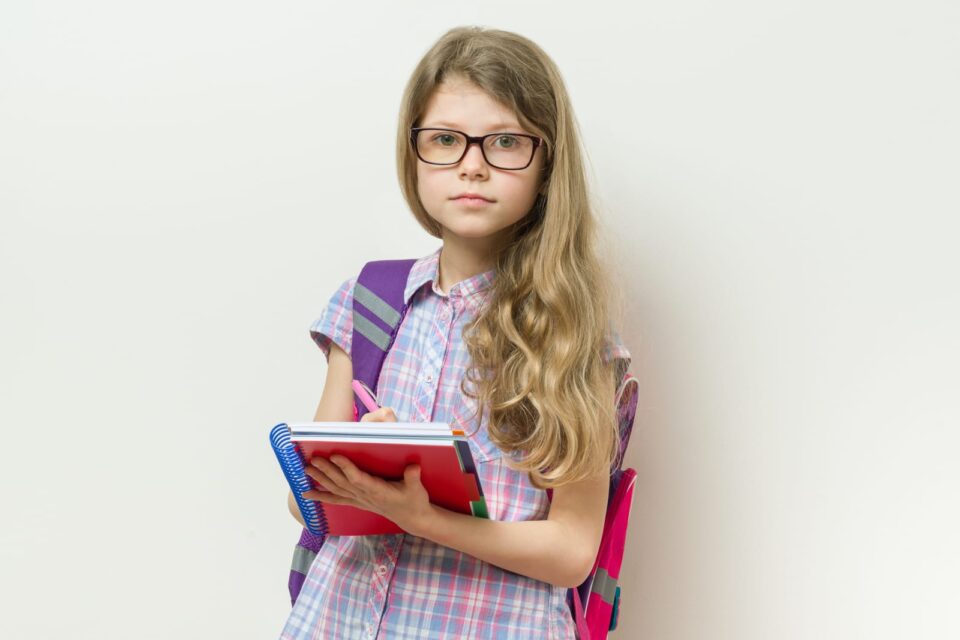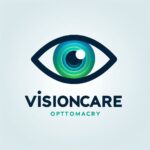Effective Myopia Solutions for Children Explained
Do you know that nearly 50% of people are affected by myopia, or nearsightedness? As the prevalence of myopia in children rises, it becomes essential to understand the most effective solutions to manage and treat this condition. Are you curious about the latest myopia solutions for children that can help protect their eye health in the long run?

Key Takeaways:
- Myopia, or nearsightedness, affects nearly 50% of people.
- Increased near-focused activities may contribute to higher rates of myopia in children.
- Four effective myopia solutions for children include multifocal soft contact lenses, atropine eye drops, orthokeratology, and specialized spectacle lenses.
- Steps like spending more time outdoors and limiting screen time can also help slow myopia progression.
- With a combination of treatments and lifestyle changes, the impact of myopia in children can be minimized.
Multifocal Soft Contact Lenses
Multifocal soft contact lenses are a recommended solution for children aged 6-12 with myopia. These lenses have different areas of focus, correcting blurry distance vision in the center while blurring peripheral vision. This design effectively slows down eye growth and helps limit myopia progression.
By providing clear vision in the center and blurring the side vision, multifocal soft contact lenses help to train the eyes and reduce the need for stronger prescriptions over time. This not only improves visual clarity but also helps to preserve overall eye health in children.
Proper care and maintenance of these lenses are essential to ensure optimal vision correction and prevent complications. It is important to adhere to the instructions provided by the eye care professional regarding wear duration, cleaning, and storage of the lenses.
Remember: Regular follow-up appointments with the eye care professional are necessary to monitor the progress and make any necessary adjustments to the lens prescription.
“Multifocal soft contact lenses can be an effective option for managing myopia in children. They correct vision while also slowing down the progression of nearsightedness.”
Atropine Eye Drops
One of the effective myopia treatment options for children is the use of atropine eye drops. This low-dose medication can help slow the progression of myopia in children aged 5-18. By administering the drops each night at bedtime, you can prevent the eye from lengthening too much, which is a contributing factor to myopia progression.
Atropine eye drops work by dilating the pupil and temporarily relaxing the focusing muscles in the eye. This helps to reduce the strain on the eye and limit the progression of myopia. However, it is important to note that atropine eye drops may cause temporary side effects such as redness or itchiness around the eye. These side effects are usually mild and resolve on their own.
“Atropine eye drops are considered one of the most effective treatment options for managing myopia in children, offering a convenient and non-invasive solution to slow down the progression of nearsightedness.”
In order to ensure the proper use of atropine eye drops, it is important to follow the instructions provided by your eye care professional. They will guide you on the correct dosage and frequency of application. Regular eye examinations are also necessary to monitor your child’s progress and adjust the treatment plan if needed.
Overall, atropine eye drops provide a valuable and effective option for managing myopia in children. They can be used alongside other treatment options to create a comprehensive approach to myopia control. To find out if atropine eye drops are suitable for your child, consult with a qualified eye care professional who specializes in pediatric myopia management.
Orthokeratology
Orthokeratology, also known as Ortho-K, is a non-surgical treatment option for myopia control in children. This method involves wearing specialized contact lenses overnight, which reshape the cornea while you sleep, resulting in clearer vision during the day.
The effects of Ortho-K are temporary, but consistent use of these lenses may provide a permanent reduction in myopia progression in children. This makes Ortho-K an attractive option for parents looking for long-term myopia management.
It is important to note that there is a slight risk of infection associated with wearing Ortho-K lenses, as they are worn overnight. Therefore, it is crucial to follow proper hygiene practices and adhere to regular follow-up visits with your eye doctor to monitor the health of your child’s eyes.
Ortho-K may be a suitable option for children who:
- Have moderate to high levels of myopia
- Are not suitable candidates for other myopia treatment options
- Are unable to or do not want to wear contact lenses during the day
By wearing Ortho-K lenses overnight, children can enjoy clear vision during the day without the need for glasses or daytime contact lenses.
- Non-surgical and reversible
- Provides temporary clear vision during the day
- Potential permanent reduction in myopia progression
- Possible risk of infection
- Requires consistent overnight wear
- Regular follow-up visits with eye doctor
Spectacle Lenses
Specialized spectacle lenses are an effective option for treating myopia in young patients. These lenses, particularly those with “lenslets” or diffusion of light designs, have been shown to be successful in slowing the progression of childhood myopia.
When it comes to myopia control, different types of spectacle lenses have varying effects. Bifocal lenses, which have two different vision correction zones, can moderately slow down the progression of myopia. On the other hand, progressive addition lenses, which gradually blend vision correction powers, are less effective in managing childhood myopia.
It is important to note that while myopia control spectacles are safe to wear, they may limit certain activities. Although these specialized lenses offer invaluable benefits in treating myopia in young patients, they may slightly impact the field of view, especially peripheral vision, when compared to regular lenses.
Did You Know? Myopia, or nearsightedness, is becoming increasingly common in young children. It is crucial to address this issue early on to prevent potential vision problems in the future.
Comparing Myopia Control Spectacle Lenses
Type of Spectacle Lenses | Effectiveness in Slowing Myopia Progression | Lens Design |
|---|---|---|
Bifocal Lenses | Moderate | Two different vision correction zones - one for distance and one for near vision |
Progressive Addition Lenses | Less effective | Gradually blend vision correction powers |
Lenses with "Lenslets" or Diffusion of Light Designs | Highly effective | Introduce varying zones of focus, slowing the progression of myopia |
This table highlights the key differences between different types of myopia control spectacle lenses. It is evident that lenses with “lenslets” or diffusion of light designs offer the highest effectiveness in slowing down myopia progression, making them a preferred solution for treating myopia in young patients.
Steps to Slow Myopia
1. Encourage Outdoor Time
2. Limit Screen Time
3. Balance Near-Focused Activities
4. Support Myopia Management
Seek guidance from eye care professionals who specialize in pediatric myopia management. They can provide you with additional resources, information, and personalized strategies to slow your child’s myopia progression. Regular follow-up visits and discussions will ensure the best possible outcome for your child’s eye health.
“By integrating these steps into your child’s routine, you can actively participate in their myopia control journey and safeguard their vision for the future.”
Resources
Check out these resources for more information on kids myopia control and managing nearsightedness in children:
- American Academy of Ophthalmology – Myopia (Nearsightedness)
- Academy of Myopia Control and Orthokeratology
- All About Vision – Myopia in Children
By following these steps and leveraging available resources, you can play an active role in managing your child’s myopia and ensuring their long-term eye health.
Conclusion
Here goes your text … Select any part of your text to access the
Myopia in children is a common condition that can have long-term implications for eye health. With effective myopia solutions such as multifocal soft contact lenses, atropine eye drops, orthokeratology, and specialized spectacle lenses, it is possible to slow the progression of myopia and protect a child’s vision. By working together with parents and healthcare providers, the most suitable treatment for each child can be identified, ensuring the best possible outcome.
Implementing a combination of these treatments, along with lifestyle changes, can greatly minimize the impact of myopia in children. It is important to remember that myopia therapy for kids is a comprehensive approach, involving regular follow-up visits and consistent use of prescribed treatments. With the right care and management, the long-term effects of myopia can be significantly reduced, allowing children to enjoy clear, healthy vision as they grow.
If you have a nearsighted child, it is advisable to consult with an optometrist or ophthalmologist experienced in pediatric myopia treatment options for children. They can provide a thorough evaluation and recommend the most suitable therapies for your child’s specific needs. Remember, early intervention and ongoing management are key to ensuring optimal eye health and vision for your child.
FAQs
What are some effective myopia solutions for children?
Four effective myopia solutions for children include multifocal soft contact lenses, atropine eye drops, orthokeratology, and spectacle lenses.
How do multifocal soft contact lenses help in managing myopia?
Multifocal soft contact lenses have different areas of focus, correcting blurry distance vision in the center while blurring peripheral vision. This blurring of peripheral vision helps slow eye growth and limit myopia progression.
What are atropine eye drops and how do they treat myopia in children?
Atropine eye drops are low-dose drops administered each night at bedtime. They can slow the progression of myopia by preventing the eye from lengthening too much, which is a contributing factor to myopia progression.
What is orthokeratology and how does it work in myopia control?
Orthokeratology, also known as Ortho-K, involves wearing specialized contact lenses overnight to correct blurry distance vision during the day. These lenses reshape the cornea, resulting in clearer vision and potentially providing permanent reduction in myopia progression.
Can specialized spectacle lenses help in treating myopia in children?
Yes, specialized spectacle lenses, particularly those with “lenslets” or diffusion of light designs, have been shown to slow myopia progression. Bifocal lenses can also have a moderate effect, while progressive addition lenses are less effective.
What are some steps parents and children can take to slow myopia progression?
Encouraging children to spend more time outdoors and limit screen time can help reduce the risk of myopia. Finding a balance between near-focused activities and outdoor time is crucial in managing myopia in children.
How can effective myopia solutions benefit children's vision in the long term?
Effective myopia solutions, such as multifocal soft contact lenses, atropine eye drops, orthokeratology, and specialized spectacle lenses, can slow the progression of myopia and protect a child’s vision. By implementing a combination of treatments and lifestyle changes, the impact of myopia in children can be minimized.
